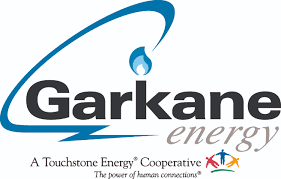News reports have circulated in the national press and elsewhere warning of the possibility of electric power blackouts occurring this summer due to extremely hot weather. As we explain further below, the potential blackouts are not expected to interrupt service to Garkane customers; even so, the warnings are worth taking note given the interconnected nature of the electric system in which we operate.
Years ago, Garkane and other rural electric cooperatives joined together to form Deseret Power, which generates bulk electricity to meet the entire power supply needs of Garkane and the other Deseret member systems. Deseret Power has invested hundreds of millions of dollars to build and maintain a fleet of ultra-reliable base load generating resources fueled by coal, natural gas, and hydropower, and tied into the high voltage delivery grid that interconnects the entire western United States.
The western power grid is owned by numerous entities, but it is operated by a central authority which ensures not only that the structures and facilities are properly designed and maintained to deliver energy where it is needed, but also that each electric utility on the grid deposits sufficient energy every hour to meet the requirements of that utility’s combined load.
When a utility experiences a shortfall in electric production, the grid operator enforces rules that require the utility to purchase additional energy on the spot market, potentially at extremely high prices depending on conditions. As a last resort, if there is not enough spot energy available, the affected utility will be ordered to de-energize portions of its customer distribution system to bring down the total demand for electricity the utility is taking from the grid. These events—called “rolling blackouts”—have occurred in past years in portions of California when searing temperatures combined with stagnant air and hazy skies, so that wind and solar resources dropped off across large regions. During those so-called “generation alerts,” the electric markets could run out of available backup supplies. When this happens, utilities that attempt to rely too heavily on intermittent resources have been forced to de-energize customers for hours at a time.
Deseret Power has never been in danger of running short of electricity; it has never been ordered to cut portions of its load due to a supply problem. In fact, Deseret’s resources are more resilient than almost every other utility operating today. It routinely sells power to other western utilities in the spot energy market since the electricity Deseret produces is not heavily dependent on wind and solar, and the quantity of its resources is more than sufficient to meet the combined needs of Garkane and member systems.
The western grid operator has warned that, as more and more base load resources are planned for retirement in western states, some utilities appear to be betting on getting an increased percentage of their total energy needs from intermittent resources that can drop off when wind abates or solar intensity falls off. Deseret is not one of those utilities; the vast majority of our resources are capable of generating night and day in all kinds of weather. We believe in renewable energy—in fact Deseret will install millions of dollars of solar arrays this year—but renewables and other intermittent resources are most valuable when used as a compliment to, and not a substitute for, reliable around-the-clock generation.
– by Neal Brown, Garkane Energy

